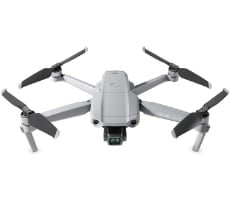Hands-On The Phab2 AR Smartphone, Moto Z And Moto Z Force At Lenovo Tech World

Lenovo CEO Yang Yuanqing (a.k.a. YY) led the keynote presentation, and along with folks from Google, Ashton Kutcher made an appearance, as well as Vivian Tam and Meghan McCarthy.

Meghan slapped one of these bendable phones on her wrist and it wrapped around and stayed in-place. Lenovo says it's just a concept, for now.
This program inspired by the American Natural History Museum stole the spotlight of the launch, and for good reason—it’s really, really cool. We saw a handful of demos of this software, both on-stage and in front of us, both in the media area as well as in a mock living room they had for demos. Essentially the software is able to project a 3D dinosaur into whatever space you’re in, and since the phone can sense space, depth, and distance it knows to put the dinosaur on the floor, or table, and when you look at the phone it really does look like there’s a dinosaur standing just a few feet away. The dinosaurs are rendered quite crudely, but they are animated instead of being static models. They mostly just kind of look around, move their tails, and appear semi life-like. You can make them bigger or smaller, and put them anywhere you want as long as it’s a flat surface. From what we saw there were about a half dozen dinos available, and as you move the phone closer to the model you can see various parts of them up-close. Tapping contextual buttons reveals information about the particular animal. You could also put framed prints of dinosaurs on your walls too, creating a “virtual museum.”
Domino World and Toybox
This was a piece of software that was demo’d on stage and in front of us a few times, and it looks like it would be a lot of fun to play around with as there are a lot of options available. Basically it lets you lay down rows of dominoes in whatever space you are in by just tapping a button and dragging a point on the screen around. You can also move the dominoes, and it seems like there are a bunch of ways to have other elements interact with them too, as opposed to just setting them up and knocking them down. We say that because in one demo (see video) at one point an alien spaceship hovered over them and sucked something up, then a cow went flying off the table and onto the floor. It all happened kind of fast, but it looked really fun. Plus whenever the Lenovo demo people pulled up a menu to select something there were a plethora of options available. There was also an option to open a toy box, but we didn’t get a chance to check that one out.
Lowes App
Lenovo and Google have partnered with home improvement store Lowes to create an app that lets you put 3D furniture in your living space, measure things, and more. The first demo we saw had an empty bit of space in a living room, and using the app we were able to put a chair in place and move it around a bit. This is theoretically helpful in seeing what a particular room would look like if it had this or that piece of furniture in it. The second demo was one designed to see if a space could accommodate a refrigerator. This time around we were able to put a Samsung refrigerator into an empty space in the demo room to give us an idea of what it would look like, if it would fit, and how much space we’d have once it was installed. Finally, the app can also take measurements, so they pointed the phone at a shelf that was installed on a wall, and were able to measure the distance from the shelf to the floor. It seemed pretty accurate, but we didn’t have a tape measure on hand to double-check it. This is the type of app that certainly looked useful, but obviously not something you’d use every day. We also wonder how many appliances and pieces of furniture are included in the app.

Raise
If you live in an apartment that doesn’t allow pets, this is the app for you. It places a dog in whatever space you are occupying, and since the phone knows where the walls and floor are located, so does the dog. This allows him to walk around and lay down just like a normal dog would in your living room. The only demo we saw that involved the dog doing something was one with a ball (you can select various toys for the pet to interact with). The demo person threw the ball against the wall by flicking the screen, and again, the phone knows where the wall is so the ball bounced off it every time. They also placed a boom box on the floor, and as we walked through the room you could see it getting further away.
The Phab2 Pro is not only the first commercially available AR phone but also the first Lenovo-branded phone in the U.S. as well. It'll be available in September for $499 unlocked at both Lowes and Best Buy, as well as online.
Lenovo didn't stop with the Pab2 Pro, though. Hit the next page to see what else Lenovo has cooked up...






